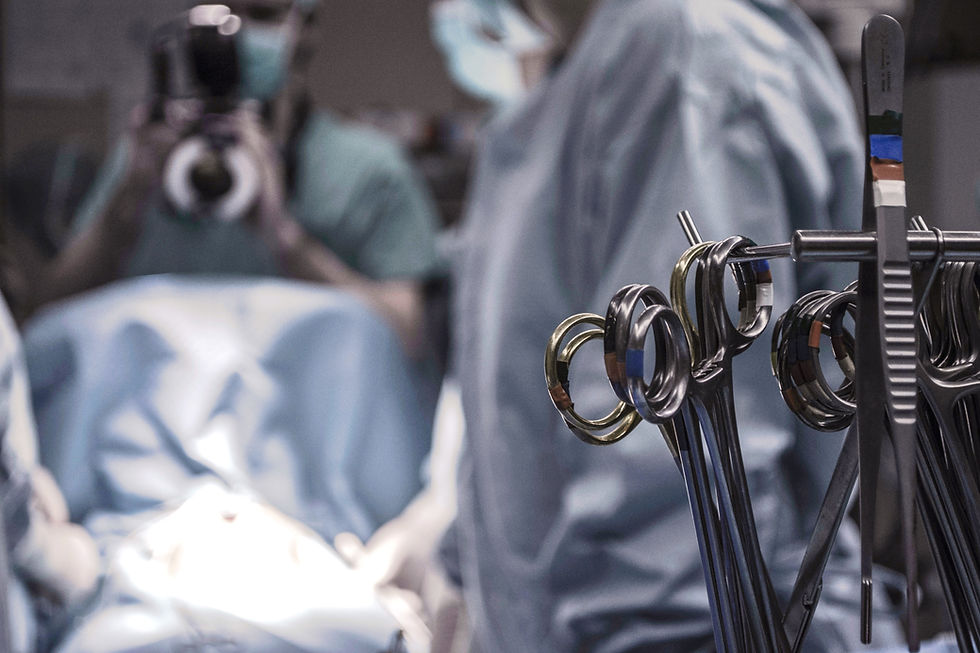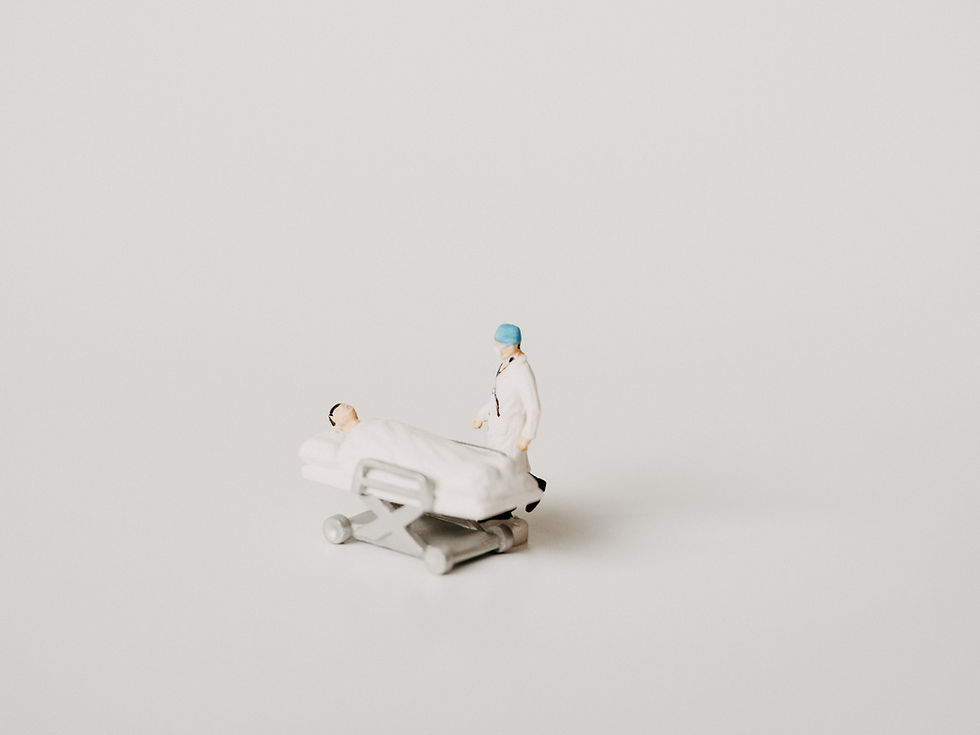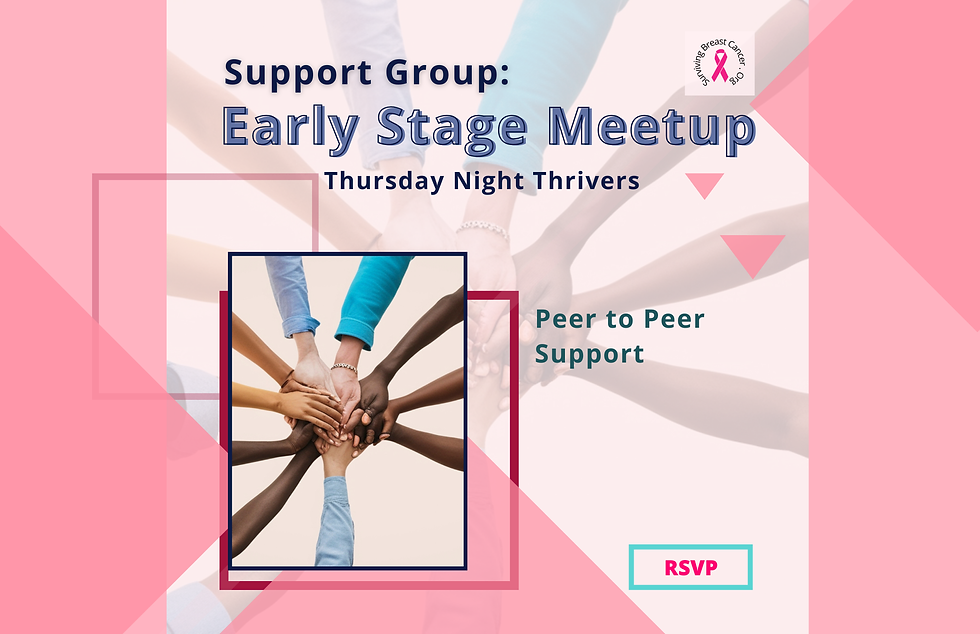Surgical Methods for Treating Lymphedema
- Surviving Breast Cancer

- Aug 7, 2022
- 5 min read
Updated: Oct 17, 2025

Lymphedema, or the buildup of lymph fluid within your lymphatic system, is a potential side effect of cancer treatments. It often occurs in the arms, chest, or back, and those undergoing breast cancer treatments are often at a higher risk because of lymph node biopsy/dissection or breast, chest, or underarm radiation affecting the lymphatic system.
(Listen Now)
Lymphedema may present with cumbersome side effects, including swelling, pain, and heaviness in the affected area. Because of this, it is important to find a treatment plan that works to minimize your symptoms. Healthcare providers advise lymphatic drainage massages and compression sleeves, devices, or bandages as non-surgical treatments and can refer patients to physical therapists who are specifically trained in these techniques. Additionally, there are a few surgical treatments that may be worth considering if your lymphedema is significantly affecting your daily activities.
There are 5 main surgical techniques that healthcare providers may use to reduce or eliminate lymphedema:
1. Liposuction
Liposuction traditionally removes excess fat tissue from the body. However, in some patients, the excess lymph fluid can stimulate inflammation in the affected body part, leading to abnormal fat buildup, which then needs to be removed. Depending on the location of your lymphedema, liposuction can be an outpatient procedure, but usually requires about a week of recovery time. You will then be followed for an additional six months to ensure post-operative success, and are advised to wear compression garments during your recovery.
This surgery is ideal for people who have not responded well to any other kind of treatment. For those suffering with late-stage, non-pitting lymphedema (lymphedema where, if you press on the area, no indent is left), liposuction can result in a near-complete reduction of swelling.
However, if you have a type of lymphedema known as “pitting edema”, where there is still lymph fluid in the affected area (if you press on the area, an indent is left), this type of intervention is not recommended as it removes fat, not lymph fluid. Additionally, liposuction is not recommended for those actively undergoing cancer treatments or for those with metastatic cancers.
2. Lymphaticovenous Anastomosis/ Lymphovenous Bypass
LVA or LVB uses microsurgical techniques to reroute your lymphatic system around the blocked area and connect your lymphatic system directly to your blood circulation. Your surgeon will identify the affected lymphatic channels using infrared dyes and an infrared camera. They will then identify the best vein to connect your lymphatic vessels to in order to restore proper flow to the area, and connect the two via an anastomosis, or vessel attachment surgery.

LVA/LVB is a minimally invasive, outpatient procedure, and most people are discharged the same day they have their surgery. Typically, your surgeon will recommend that you do not use compression garments for about a month after the surgery, to allow the attached vessels to heal properly. Many patients experience a noticeable improvement in their symptoms, but this surgery does not cure the main lymphatic blockage; instead bypasses it. As a result, it may take up to a year for some patients to have results, while there may be no change in symptoms for a small number of people.
If you want to learn more about this procedure, Mayo Clinic has produced an informational video that explains the details of the procedure with a visual explanation.
3. Vascularized Lymph Node Transfer Surgery/ Lymphovenous Transplant
VLNT is a more invasive surgery, where your surgeon takes a group of lymph nodes from a part of your body not experiencing lymphedema, and transplants them to the area with lymphedema, rewiring the lymphatic system in that area to reestablish lymphatic flow. The extent of surgery and recovery time, as well as the outcomes/potential complications of the surgery, depend on where the source lymph nodes are harvested from.
Your surgeon may choose to take lymph nodes from one of a few sites, including the groin, supraclavicular flap, the submental lymph node flap, the thoracic flap, and the jejunal mesenteric node. Healthcare providers need to be cautious about the area they take from, as removing lymph nodes from one area of the body can occasionally result in new lymphedema at that site. While there are pros and cons to each donor site, your surgeon will work with you to pick the best site for you.
Since the procedure is more involved, VLNT recovery is typically done for a few days in the hospital, then a week or two at home. You’ll likely have to manage drainage tubes as well as be careful about moving or using the affected area until you’ve recovered. While VLNT is more of a treatment for lymphedema than LVA/LBA is, there are still some people who do not respond to treatment. However, most people typically see results between six weeks to two years post-procedure.
4. Laparoscopic Omental Lymph Node Transfer
An omental transfer, sometimes known as VOLT, combines aspects of both the LVA/LBA and the VLNT to treat lymphedema. Surgeons take a sheet of fat in the abdomen known as the omentum and transplant it into the affected area, improving lymph circulation. The procedure can even be minimally invasive, with some hospitals, such as Mayo Clinic, opting to do the procedure assisted by a surgical robot (although this has not been formally approved by the FDA).
Similarly to VLNT, VOLT recovery and outcomes vary from person to person. Some experience symptom reduction right away, while others, unfortunately, do not notice any improvement. The procedure is fairly new, but so far, it seems to work for the majority of patients studied. However, because it is a newer technique, more research needs to be done on determining who would benefit the most from it.
5. Charles Procedure

The Charles procedure is the oldest surgical treatment for lymphedema, and it is also the one with the highest rate of complications. Because of this, and the fact that there are newer, better surgical interventions, it’s rarely performed. However, in some cases, the Charles procedure can help improve severe cases of lymphedema.
The surgery is done by first cutting out the affected tissue, then using parts of the removed skin to act as a graft and seal the wound created. It is invasive and requires extensive recovery (about a month in the hospital) and monitoring to make sure the graft heals properly. The Charles procedure should only be considered if your lymphedema is severe enough that you are unable to use your limb or the affected area of your body normally. When done successfully, most patients are able to use their limb or affected body area for their everyday activities with no trouble.
More Information
While these are the main surgical interventions you would consider for lymphedema, we highly recommend talking to your healthcare provider about what the best decision is for you. At SurvivingBreastCancer.org, we want to give you the information you need to make an informed decision that is best for your body and your life. If you want to learn more about lymphedema or surgical interventions for lymphedema, check out these additional resources:



















